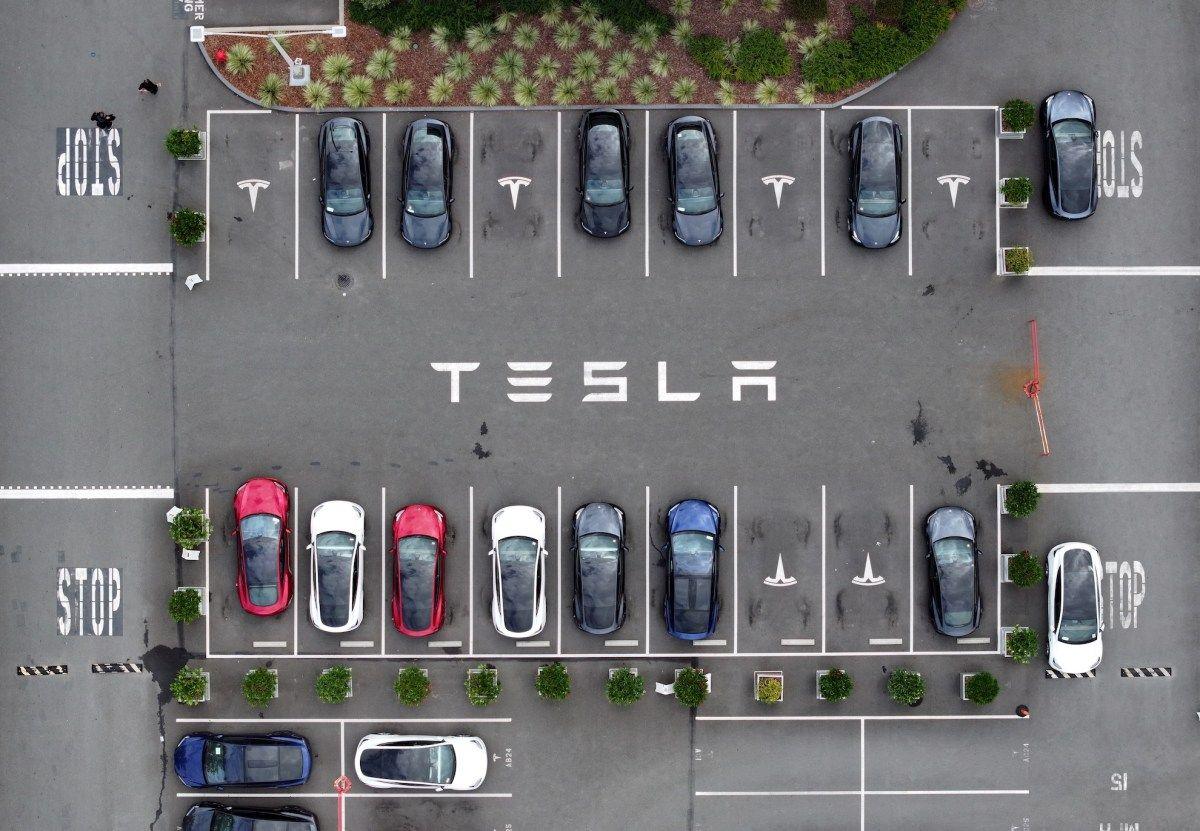Amazon's AI Investments Raise Investor Concerns Amid Strong Q2 2025 Earnings
2 Sources
2 Sources
[1]
Amazon investors not seeing results of AI spending
Amazon CEO Andy Jassy insists "AI will change every customer experience," but it's making investors nervous. The company reported Q2 2025 financial results that exceeded analysts' expectations but nonetheless saw shares slump almost 7 percent in after-hours trading. The disconnect appears to be projected Q3 2025 operating income, "expected to be between $15.5 billion and $20.5 billion, compared with $17.4 billion in third quarter 2024," per Amazon's earnings release. Analysts anticipated that figure would be around $19.48 billion, so a low-end estimate of $4 billion less is noteworthy. Reports suggest investors worry that too much Amazon revenue is going toward investment in infrastructure to support AI. Jassy in February said to expect capex spending of around $100 billion in 2025. That's more than Meta ($66-72 billion) and Microsoft ($80 billion). Google recently upped its estimate for 2025 capex spending to $85 billion [PDF]. During the company's earnings call, Amazon CFO Brian Olsavsky said the company's Q2 capex was $31.4 billion. That's up from $24.3 billion in Q1. And Olsavsky said that figure would be representative of capex spending for the remainder of the year, implying a total for the year of $118.5 billion. Overall, the numbers were pretty good. Amazon reported $167.7 billion in net sales, up 13 percent from $148 billion during the same period a year ago. Operating income rose to $19.2 billion, from $14.7 billion in Q2 2024. AWS sales accounted for $30.9 billion of this revenue, representing a 17.5 percent increase. AWS now has an annual run rate of more than $123 billion. Net income reached $18.2 billion, up from $13.5 billion a year prior. In terms of EPS, that translates to $1.68 per share. When financial analysts on the earnings call inquired about the AI strategy at AWS, Jassy said "it's still early days" - a popular phrase among tech CEOs - but insisted, "AI is the biggest technology transformation of our lifetime." Jassy sees a significant opportunity for AWS to use tools like AWS Transform, an AI agent service, to help enterprises move from on-premises infrastructure to the AWS cloud. "Remember that eighty-five percent to ninety percent of worldwide IT spend is still on premises versus in the cloud," said Jassy. "In the next ten to fifteen years, that equation is going to flip, further accelerated by companies' excitement for leveraging AI." Asked by Brian Nowak, managing director of Morgan Stanley, to respond to talk that AWS is falling behind in generative AI, Jassy said AWS has "a very significant number of enterprises and startups who are running applications on top of AWS's AI services, but the amount of usage and the expansiveness of the use cases and how much people are putting them into production and the number of agents that are going to exist, it's still just earlier stage than it's going to be." Jassy said that while much of the AI cost now is in training, costs will shift toward inference, which will mean customers paying more attention to the hardware and platform they're using. "We're at a stage right now where so much of the activity is training and figuring out how to get your generative AI applications into production," he explained. People aren't paying as close attention as they will in making sure that those generative AI applications are operating where the rest of their data and infrastructure is. "Remember, a lot of generative AI inference is just going to be another building block like compute, storage, and database. And so people are going to actually want to run those applications close to where their other applications are running, where their data is. There's just so many more applications and data running in AWS than anywhere else." ®
[2]
Amazon CEO Andy Jassy unleashed a meticulous 8-minute defense of AWS' standing in the AI arms race amid investor stock freakout
Amazon's stock price had already been dropping in after-hours trading on Thursday despite better-than-expected results when Morgan Stanley analyst Brian Nowak prefaced his questions on an earnings call with a disclaimer that made it clear this wasn't going to be a "Congrats on the quarter, guys" type of analyst -- CEO interaction. "I have two [questions] for you on AWS; they're a little tough but I'm going to throw them at you," Nowak told Amazon CEO Andy Jassy. "There is a Wall Street finance person narrative right now that AWS is falling behind in Gen AI with concerns about share loss to peers. What is your rebuttal to that and talk to us about your and the team's most important focal points just to ensure that AWS stays on the knife's edge of innovation versus hyperscaler peers?" Nowak also pressed Jassy on why it wouldn't be fair to assume that AWS' revenue growth shouldn't accelerate in the back half of the year given all of AWS' generative AI offerings and widespread demand from companies of all sizes to cash in on this transformational technology. Jassy responded by stressing that this is the early stages of a technological transformation that will extend far into the future. While some of the top frontier model providers do use AWS in some capacity, non-AI AWS customers that are rushing to build generative and agentic AI services using AWS are "quite early, and many of them are just smaller in terms of usage relative to some of those top heavy applications I mentioned earlier." That is bound to change. So if you follow Jassy's thinking, as more enterprises figure out what they want to build and how they want to build it, they're going to start having different needs. For the largest model makers, like Open AI or Anthropic, Jassy foresees their costs shifting from a mix between training their models and the cost associated with "inference," or the customer-facing part where the model spits out a prediction, answer or action, to mostly inference expenses. And Jassy maintains AWS is positioned well for this transition because of the low-cost AI chip line Trainium. "It's about 30% and 40% better price performance than the other GPU providers out there right now, and we're already working on our third version," he said. For others, who want to use another company's model to create their own generative AI applications, Jassy argued that Amazon Bedrock, which offers models from a wide selection of companies, has become a go-to destination and "is growing very substantially." Jassy continued on the this-is-just-the-first-inning thread, by noting that companies are just starting to think about deploying AI agents and that, with its recent agentic AI announcements, AWS will be well-positioned to capitalize. The Amazon CEO, and former AWS chief, added that AWS cloud leadership position also provides some lock-in as AI "inference" becomes just another component of a company's cloud services stack. "[P]eople are going to actually want to run those [AI] applications close to where their other applications are running, where their data is," Jassy said. "There's just so many more applications and data running in AWS than anywhere else." As for Nowak's question about the possibility of AWS' growth rate accelerating in the back half of the year, Jassy wouldn't directly answer it but stressed his optimism, in part stemming from more AWS starting to deploy more AI products at sale that should continue to ramp in coming quarters. Earlier in the call, Jassy had defended AWS' 18% revenue growth rate in light of Microsoft reporting 34% annual revenue growth for its Azure cloud unit and Alphabet recently reporting 32% quarterly growth for Google Cloud. Azure generates around 2/3 the revenue that AWS does, while Google Cloud registers less than half the annual revenue of Amazon's cloud behemoth. "You look at the business, it's a $123 billion annual revenue run rate business and it's still early," he said. "How often do you have an opportunity that's $123 billion in annual revenue run rate where you say it's still early? It's a very unusual opportunity that we've very bullish about."
Share
Share
Copy Link
Amazon's Q2 2025 earnings exceed expectations, but investors worry about increased AI infrastructure spending. CEO Andy Jassy defends AWS's position in the AI market, emphasizing long-term potential despite short-term stock price drop.
Amazon's Q2 2025 Financial Performance
Amazon reported strong financial results for Q2 2025, with net sales reaching $167.7 billion, a 13% increase from the previous year
1
. The company's operating income rose to $19.2 billion, up from $14.7 billion in Q2 2024. Net income also saw a significant boost, reaching $18.2 billion, translating to $1.68 per share1
.AWS Growth and AI Investment
Amazon Web Services (AWS) continued its robust performance, with sales accounting for $30.9 billion of the total revenue, representing a 17.5% increase. AWS now boasts an annual run rate of over $123 billion
1
. However, the company's aggressive AI investments have raised concerns among investors.Investor Concerns and Stock Performance

Source: The Register
Despite exceeding analysts' expectations, Amazon's shares slumped almost 7% in after-hours trading
1
. The primary cause for concern appears to be the projected Q3 2025 operating income, which Amazon estimates to be between $15.5 billion and $20.5 billion, potentially falling short of the $19.48 billion analysts anticipated1
.Massive Capital Expenditure for AI
Amazon CFO Brian Olsavsky revealed that the company's Q2 capex was $31.4 billion, up from $24.3 billion in Q1. This spending pattern is expected to continue, implying a total capex of $118.5 billion for 2025
1
. This figure surpasses the projected AI investments of competitors like Meta ($66-72 billion), Microsoft ($80 billion), and Google ($85 billion)1
.Andy Jassy's Defense of AWS AI Strategy

Source: Fortune
In response to concerns about AWS falling behind in generative AI, CEO Andy Jassy provided a detailed defense during the earnings call
2
. He emphasized that it's "still early days" in the AI transformation, stating, "AI is the biggest technology transformation of our lifetime"1
.Related Stories
Key Points in Jassy's AI Strategy Defense:
-
Early Stage Market: Jassy stressed that many enterprises are still in the early stages of figuring out their AI strategies and implementations
2
. -
Shift in AI Costs: He predicted a shift from training costs to inference costs, highlighting AWS's Trainium chip's superior price performance
2
. -
Amazon Bedrock Growth: Jassy noted substantial growth in Amazon Bedrock, which offers a wide selection of AI models
2
. -
AWS's Cloud Leadership: He emphasized AWS's dominant position in cloud infrastructure, suggesting this would provide an advantage as AI becomes integrated into existing cloud services
2
.
Future Outlook and AI Integration
Jassy sees significant potential for AWS to leverage tools like AWS Transform, an AI agent service, to help enterprises migrate from on-premises infrastructure to the AWS cloud. He stated, "Remember that eighty-five percent to ninety percent of worldwide IT spend is still on premises versus in the cloud. In the next ten to fifteen years, that equation is going to flip, further accelerated by companies' excitement for leveraging AI"
1
.Despite investor concerns, Jassy remains optimistic about AWS's position in the AI market, emphasizing the long-term potential and the unique opportunity presented by the convergence of cloud computing and AI technologies
2
.References
Summarized by
Navi
[1]
Related Stories
Recent Highlights
1
OpenAI releases GPT-5.2 AI model after code red memo targets Google's Gemini 3 threat
Technology

2
Disney invests $1 billion in OpenAI, licenses 200+ characters for Sora video generator
Technology

3
Disney accuses Google of massive copyright infringement through AI-generated character images
Policy and Regulation








